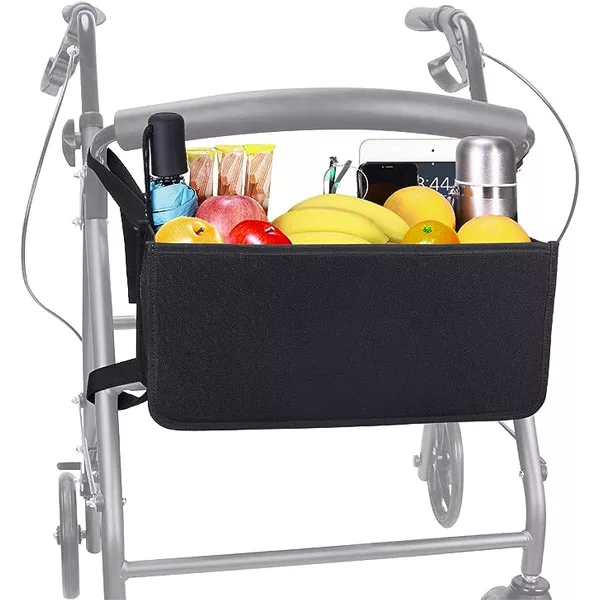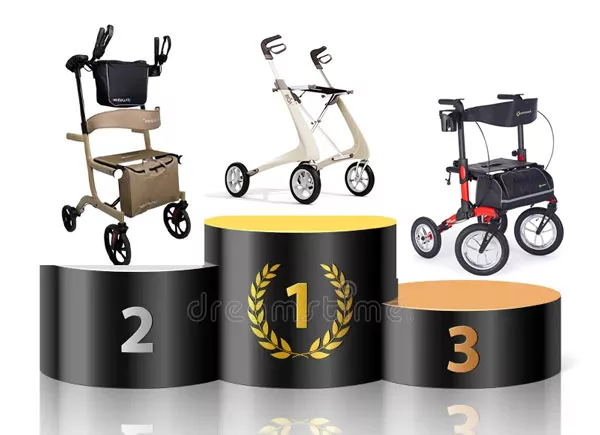Types of Walkers: Your Ultimate Guide to Choosing the Right Walker for Your Golden Years
Table of Contents
Types of Walkers: Introduction
Ah, the golden years! A time for relaxation, hobbies, and… walkers? Yes, you heard it right. If you’re reading this, chances are you’re in the market for a walker.
But with so many options out there, how do you choose? Fear not, for this guide is your one-stop-shop for all things walker-related.
So, you’ve decided it’s time to invest in a walker. Maybe you’ve had a recent surgery, or perhaps you just want to be more mobile. Either way, you’re here, and that’s what counts.
But before you rush off to the nearest medical supply store, let’s take a moment to understand the different types of walkers available. Trust me, it’s a jungle out there!
Types of Walkers for Adults: The Basics
Walkers come in various shapes and sizes, each designed to meet specific needs. From basic models to high-tech gadgets, there’s something for everyone.
Let’s start with the basics. The most common types of walkers for adults include standard walkers, two-wheel walkers, and rollators. Each has its own set of features, so choose wisely!
Walkers with Seats: Sit and Stroll
Ever thought, “I wish I could sit down right here, right now?” Well, with a walker that comes with a seat, you can! These walkers are perfect for those who need to take frequent breaks.
The seat is usually padded for extra comfort, and some even come with backrests. But remember, these walkers are generally heavier and may not be the best option for those with limited upper body strength.
Physical Therapy and Walkers: A Match Made in Heaven
If you’re recovering from surgery or an injury, your physical therapist might recommend a specific type of walker.
These walkers are designed to provide the right amount of support and stability, helping you regain your strength and balance. So, listen to the experts; they know what they’re talking about!
How to Adjust Your Walker’s Height
You wouldn’t wear shoes that don’t fit, so why use a walker that’s not the right height? Adjusting your walker’s height is crucial for both comfort and safety.
Most walkers come with adjustable legs, making it easy to find the perfect fit. Just remember, your elbows should be slightly bent when you hold the handles.
Rollator Walker: The Cadillac of Walkers
Ah, the rollator, the Rolls Royce of walkers. These bad boys come with all the bells and whistles—seats, baskets, and even cup holders. But what sets them apart is the wheels.
All four legs have wheels, making it easier to move around. However, they’re not recommended for those who need significant support or have balance issues.
The Good Ol’ Standard Walker
Sometimes, simple is best. The standard walker is your basic, no-frills option. It’s sturdy, reliable, and gets the job done. Best of all, it’s usually the most affordable.
However, it does require you to lift the walker to move, so it may not be the best option for those with limited arm strength.
Two-Wheel Walker: The Middle Ground
Can’t decide between a standard walker and a rollator? Meet the two-wheel walker. As the name suggests, this walker has wheels on the front two legs, making it easier to move.
It offers more support than a rollator but is easier to maneuver than a standard walker. It’s the best of both worlds!
Three-Wheel Walker: The Tricycle for Adults
Three-wheel walkers are lighter and more maneuverable than their four-wheeled counterparts.
They’re great for indoor use and tight spaces but may lack the stability needed for outdoor terrain. Think of them as the sports cars of the walker world—fast and sleek, but not always the most practical.
Four-Wheel Walker: Stability Meets Mobility
If you’re looking for a walker that can handle a variety of terrains, the four-wheel walker is for you.
These walkers are stable and come with a variety of features, including seats and storage baskets. However, they can be bulky and are often more expensive.
Front-Wheel Walker: Forward Motion
Front-wheel walkers are similar to two-wheel walkers but offer more stability. They’re a good option for those who need extra support but still want to maintain a sense of independence.
Just be careful on uneven surfaces; those front wheels can be tricky!
Knee Walker: The One-Legged Wonder
Last but not least, we have the knee walker. These walkers are perfect for those recovering from foot or ankle surgery. Instead of hobbling around on crutches, you can glide effortlessly on a knee walker.
They come with a padded platform for your knee, making them a comfortable alternative to traditional walkers.
Conclusion
So there you have it, folks! A comprehensive guide to the different types of walkers available. If you’re ready to make a decision, don’t forget to check out our Top 5 Best Walkers for Seniors in 2023 for some top-notch recommendations.
So take your time, do your research, and maybe even test a few out. After all, you’ll be spending a lot of time together!
Frequently Asked Questions
What is the best type of walker for outdoor use?
For outdoor use, a four-wheel walker or rollator is generally the best option. They offer stability and come with features like seats and storage baskets, making them versatile for various terrains. However, always consult with your healthcare provider for personalized advice.
How do I know if a walker is the right height for me?
A walker is at the right height if your elbows are slightly bent when you hold the handles. Most walkers come with adjustable legs, so you can easily customize the height to fit you perfectly.
Can I use a walker with a seat if I have limited upper body strength?
Walkers with seats are generally heavier than standard walkers. If you have limited upper body strength, you may find it challenging to lift and maneuver such a walker. Consult your healthcare provider for the best option tailored to your needs.
Are three-wheel walkers safe?
Three-wheel walkers are generally safe for indoor use and tight spaces. However, they may lack the stability needed for outdoor terrains. Always use caution and consult your healthcare provider for personalized advice.
What’s the difference between a rollator and a standard walker?
A rollator has four wheels and usually comes with additional features like a seat, basket, and brakes. A standard walker has no wheels and must be lifted to move. Rollators are easier to maneuver but offer less support than standard walkers.
Do I need a prescription to get a walker?
While you don’t necessarily need a prescription to purchase a walker, having one can help you get insurance coverage for the cost. Consult your healthcare provider for more information.
How do I maintain my walker?
Regularly check for wear and tear, especially on the rubber tips and wheels. Clean the frame with mild soap and water, and always follow the manufacturer’s guidelines for maintenance.
Can I travel with my walker?
Yes, most walkers are designed to be foldable for easy transport. However, if you’re flying, it’s best to check with the airline for their specific guidelines on traveling with mobility aids.
What is a knee walker, and when should I use one?
A knee walker is designed for individuals recovering from foot or ankle surgery. It comes with a padded platform for your knee and allows you to glide rather than hobble. Consult your healthcare provider to see if it’s a suitable option for you.
Are there walkers designed specifically for physical therapy?
Yes, some walkers are designed to provide extra support and stability for those undergoing physical therapy. Always consult your physical therapist for recommendations tailored to your specific needs.







One Comment
Comments are closed.